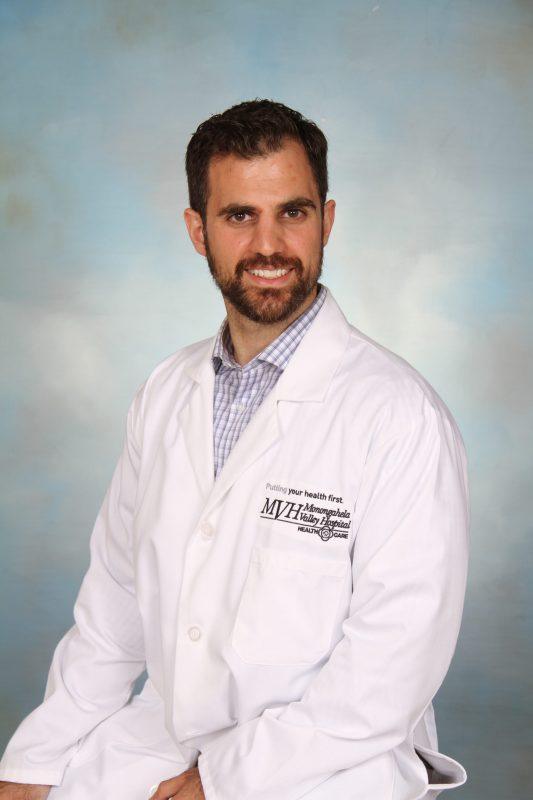By: Anthony Cuneo, MD, PhD
Cryoanalgesia and Non-Opioid Options: Physical Medicine and Rehabilitation specialist at Monongahela Valley Hospital in Pittsburgh, PA.
As a specialist in Physical Medicine and Rehabilitation, I strive to help patients improve their function and pain. Therefore, it is paramount that I’m consistently well-informed of the latest clinical research and innovations within my field.
While certain medications, like opioids, have been widely used for pain management, heightened awareness around their associated risks and the current addiction epidemic has driven me, and my fellow physicians, to seek out safe and effective alternatives. I am especially encouraged by the growing arsenal of pain management options available, including non-opioid medications and non-pharmacologic interventions, that successfully stave off pain and reduce unnecessary exposure to opioids. In fact, I’ve adopted a number of non-opioid approaches into my practice that enhance the overall experience of my patients.
Through my work, I frequently see patients dealing with chronic osteoarthritis (OA) pain who are not yet candidates for a total knee arthroplasty (TKA) surgery or want to put off surgery for one reason or another. In both of these instances, I’ve found great success utilizing cryoanalgesia. Cryoanalgesia is a type of cryotherapy that applies intensely focused and controlled cold therapy to a specific nerve to prevent its ability to transmit a pain signal to the brain.
Essentially it harnesses the body’s own natural response to cold to help reduce pain. In my practice, I utilize cryoanalgesia with iovera°, a non-opioid treatment system that delivers highly focused doses of cold temperature with a portable handheld device to cease pain signal transmission. Until now, traditional cryotherapy treatments were invasive and used large, complicated machines.
With the iovera° handheld device, I am able to deliver precise, controlled doses of cold temperature only to the targeted nerve. The administration of the therapy is easy and quick, typically only requiring a 15-minute treatment, which often provides my patients with immediate opioid-free pain relief for up to 90 days. Importantly, the treated nerves are only temporarily blocked from sending pain signals, meaning the body fully restores nerve function after the nerves regenerate.
For many patients, the use of cryoanalgesia has been a gamechanger, especially when administered several days before a planned TKA surgery. Through this approach, I’m able to decrease pain medication use and discomfort prior to and following surgery. Many times, my patients are walking better almost immediately following the treatment. Further, with their knee pain under control, many patients can now face surgery and rehab with a higher degree of comfort and confidence.
Most importantly, it has helped significantly reduce the need for opioids to control pain both before and after surgery; therefore, we’re able to reduce the potential for unwanted opioid-related side effects such as nausea, vomiting, constipation, and the risk of addiction or dependence. In fact, a study found that TKA patients who received cryoanalgesia therapy via iovera° required 45% less opioids during the 12 weeks following surgery.
As clinicians, it’s important we make every effort to be at the forefront of turning the tide of this epidemic through effective non-opioid approaches. In fact, my Orthopedic surgical colleagues, who perform the TKA procedures that I prep patients for, use a non-opioid option for TKA, called EXPAREL® (bupivacaine liposome injectable suspension).
EXPAREL is a long-acting local anesthetic that is injected into the surgical site during surgery. Due to the long-lasting, numbing nature of this product, it can provide relief in the first few days following surgery when pain is often at its peak. Through our adoption of non-opioid options like EXPAREL and iovera°, our practice has seen a 36% reduction in post-discharge opioid use, and often, our patients’ pain is very well managed.
With the world around us constantly evolving, pain management strategies must adapt and evolve as well. I am passionate about, and committed to, educating my peers and patients about my experience and success with non-opioid options to manage pain. As our nation continues to combat the opioid epidemic, it is imperative that we as clinicians make every effort to stay up to date on alternatives that reduce our reliance on opioids, while providing our patients with the effective pain relief they rely on us for.




